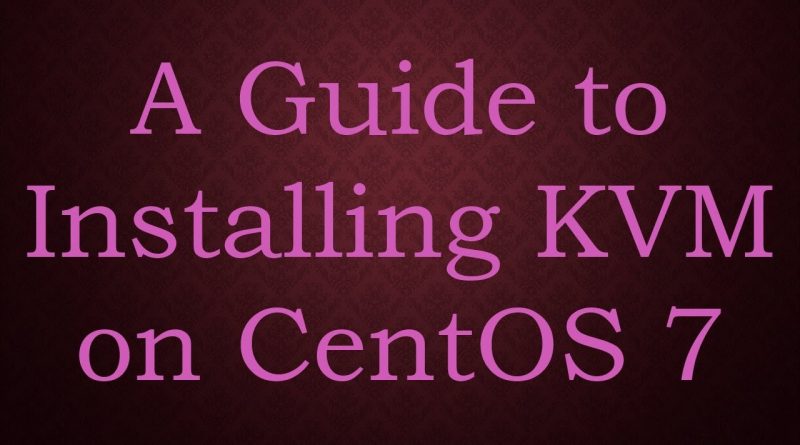A Guide to Installing KVM on CentOS 7
Disclaimer/Disclosure: Some of the content was synthetically produced using various Generative AI (artificial intelligence) tools; so, there may be inaccuracies or misleading information present in the video. Please consider this before relying on the content to make any decisions or take any actions etc. If you still have any concerns, please feel free to write them in a comment. Thank you.
—
Summary: Learn how to install KVM (Kernel-based Virtual Machine) on CentOS 7 with this step-by-step guide. Virtualization is a powerful tool for server management and resource utilization, and KVM provides a robust platform for running virtual machines on CentOS 7.
—
Kernel-based Virtual Machine (KVM) is a virtualization infrastructure for the Linux kernel that allows you to turn your Linux machine into a hypervisor. If you’re running CentOS 7 and looking to set up virtual machines, KVM is a powerful and efficient choice. Here’s how to install KVM on CentOS 7:
Check Hardware Virtualization Support:
Before installing KVM, ensure that your CPU supports hardware virtualization and that it is enabled in the BIOS settings. You can check if your CPU supports virtualization with the following command:
[[See Video to Reveal this Text or Code Snippet]]
Install KVM Packages:
Start by updating your system’s package repository and then install the necessary packages for KVM using yum:
[[See Video to Reveal this Text or Code Snippet]]
Start and Enable Libvirtd Service:
Libvirtd is the service responsible for managing virtualization resources on the host. Start the service and enable it to start automatically on boot:
[[See Video to Reveal this Text or Code Snippet]]
Verify Installation:
Once the installation is complete, verify that the KVM kernel modules are loaded and that the libvirtd service is running:
[[See Video to Reveal this Text or Code Snippet]]
Create a Bridge Interface (Optional):
If you plan to use bridged networking for your virtual machines, create a bridge interface and assign it to your physical network interface. Edit the network configuration file:
[[See Video to Reveal this Text or Code Snippet]]
Add the following configuration (replace eth0 with your actual network interface):
[[See Video to Reveal this Text or Code Snippet]]
Configure Network Interface:
Now, configure your physical network interface to use the bridge interface. Edit the network configuration file for the physical interface (e.g., ifcfg-eth0):
[[See Video to Reveal this Text or Code Snippet]]
Modify the file to resemble the following (remove or comment out the IPADDR, NETMASK, and GATEWAY lines):
[[See Video to Reveal this Text or Code Snippet]]
Restart Networking:
Restart the networking service to apply the changes:
[[See Video to Reveal this Text or Code Snippet]]
Now you have successfully installed KVM on your CentOS 7 system. You can use tools like virt-manager or virsh to create and manage virtual machines. Explore the documentation and experiment with different configurations to optimize your virtualization environment.
centos 7



